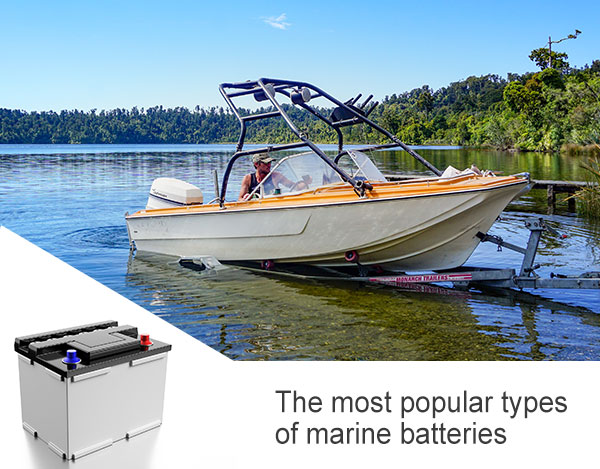There are many kinds of marine batteries. In the past, lead-acid batteries were used at first, and then nickel-metal hydride batteries and lithium batteries appeared, and most of the lead-acid batteries were gradually replaced.So?Which type of marine battery do you use the most?
Due to the requirements of environmental protection development, the batteries produced by marine battery manufacturers have basically turned to nickel-metal hydride batteries and lithium-ion batteries.
Therefore, the current ship batteries mainly use nickel-hydrogen batteries, energy storage lithium-ion batteries and lfpo4 batteries.
For large ships, due to the variety of electronic equipment, many different batteries may be installed and used at the same time for the actual equipment application requirements. Ships generally refer to relatively large cruise ships, cargo ships, ro-ro ships and other relatively large ships. These ships use several types of energy storage batteries, such as general energy storage lithium-ion batteries, nickel-hydrogen batteries, lithium iron phosphate batteries, etc.
Different types of batteries are mainly equipped according to the type of ship equipment, so what are the characteristics of these ship batteries?

1. General energy storage lithium-ion battery
The energy storage lithium-ion battery is not as good as the lfpo4 battery in high temperature resistance, the polymer lithium battery in the low temperature resistance, and the safety performance is not as good as the nickel-hydrogen battery, so its equipment price is relatively low, of course, it is generally used for lighting energy storage The power supply is sufficient for emergency lighting. The placement location is generally a place where room temperature can be maintained.
2. Lithium iron phosphate battery
The performance of lfp battery is better than that of general energy storage lithium ion battery. It has high temperature resistance and high current discharge capacity at a certain rate. The low temperature performance of ordinary lithium iron phosphate battery is relatively poor, but the improved lithium iron battery has low temperature performance. It is slightly better than NiMH battery and slightly worse than polymer lithium battery, but the high temperature performance will be reduced.
In terms of installation cost,lifepo4 batteries are more expensive than nickel-metal hydride batteries and lower than polymer lithium batteries. Therefore, most of the types of ship batteries currently used are lithium iron phosphate batteries, because under the same normal temperature application, using Lithium-iron batteries are more cost-effective.
Lifepo4 batteries have different production technology levels and materials used by manufacturers, and there will be differences in performance effects and cycle life.
Keheng battery manufacturers have been producing lithium iron phosphate batteries for many years. The lithium iron phosphate batteries produced using proprietary patented battery formulas include three types: low temperature lithium iron phosphate batteries, high rate lfpo4 batteries and conventional lfpo4 batteries. Practical applications require the design and customization of a complete set of backup power systems.
3. Ni-MH battery
The nickel-metal hydride batteries used on ships are not the common cylindrical batteries, but relatively large hydrogen energy battery systems. A set of nickel-metal hydride battery equipment is relatively large and heavy, so it is generally not moved after a single installation, and is fixed at a certain position on the ship. It is mainly used for emergency or (to store the AC power generated by the fuel engine, and then convert it into stable DC power) for some larger electronic equipment that requires stable power supply.
The marine battery system is a relatively complex energy storage system, which needs to be designed and constructed by relevant electronic engineers. At the same time, the specific use and transportation environment of the ship must be considered to determine the selection and installation of ship battery types, otherwise there will be emergencies. , it is prone to failure, resulting in irreparable losses.




